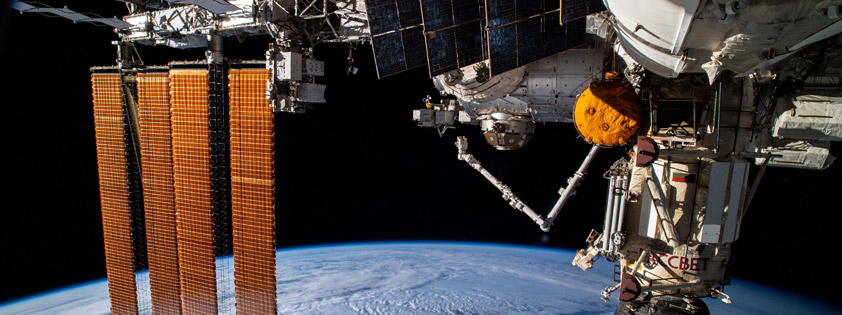ISS Trajectory Data
 International Space Station above the Atlantic Ocean.
International Space Station above the Atlantic Ocean.
Latest Generated ISS Trajectory Data
Orbit Ephemeris Message (OEM)
TXT Format
Orbit Ephemeris Message (OEM)
XML Format

ISS trajectory data is now available to the public! This data, called an ephemeris, is generated by the ISS Trajectory Operations and Planning Officer (TOPO) flight controllers in the Mission Control Center at NASA’s Johnson Space Center. TOPO keeps track of where the ISS is, where it is going to be, and most importantly makes sure it isn’t at risk of colliding with other objects in space. At ISS’s altitude, a very thin atmosphere is still present. This thin atmosphere creates drag and over time can cause TOPO’s predicted ISS trajectory to accumulate error. Because of this, TOPO updates the predicted trajectory approximately three times a week, so the ISS Flight Control Team has the best trajectory estimate possible. An accurate trajectory is essential for maintaining communications links, planning visiting vehicle rendezvous, and ensuring ISS’s path is clear of any potential collisions.
The links above and below are to the most current posted ephemeris. The ephemeris is in the CCSDS Orbital Ephemeris Message (OEM) standard and is available in .txt and .xml file formats. Each file contains header lines with the ISS mass in kg, drag area in m2, and drag coefficient used in generating the ephemeris. The header also contains lines with details for the first and last ascending nodes within the ephemeris span. Following this is a listing of upcoming ISS translation maneuvers, called “reboosts,” and visiting vehicle launches, arrivals, and departures.
After the header, ISS state vectors in the Mean of J2000 (J2K) reference frame are listed at four-minute intervals spanning a total length of 15 days. During reboosts (translation maneuvers), the state vectors are reported in two-second intervals. Each state vector lists the time in UTC; position X, Y, and Z in km; and velocity X, Y, and Z in km/s.
Orbit Ephemeris Message (OEM)
- https://nasa-public-data.s3.amazonaws.com/iss-coords/current/ISS_OEM/ISS.OEM_J2K_EPH.txt
- https://nasa-public-data.s3.amazonaws.com/iss-coords/current/ISS_OEM/ISS.OEM_J2K_EPH.xml
Users of this data should monitor this page for information regarding any future changes to the file format. Past data postings can be found archived on data.nasa.gov by searching “ISS COORDS.”
NOTE: NASA is providing this information for use by the general public. The OEM data format is supported natively by many commercial spaceflight software applications. Please consult your application’s support documentation for specific details on how to deploy this data.
Last Updated:

